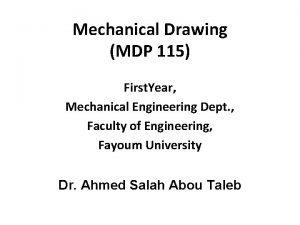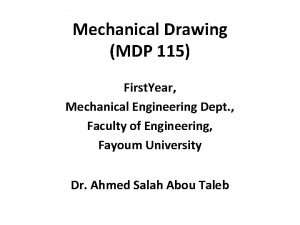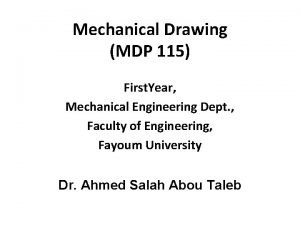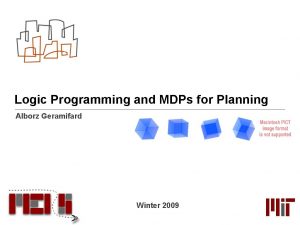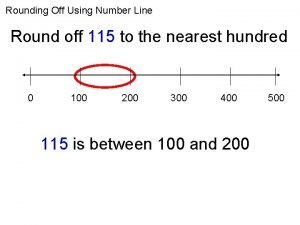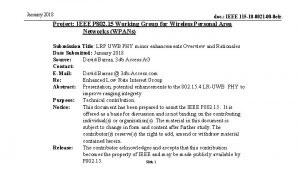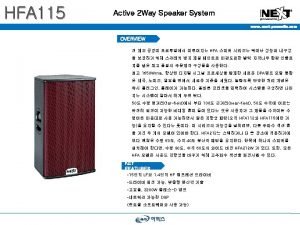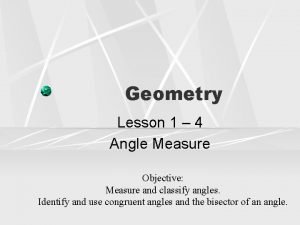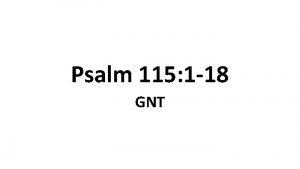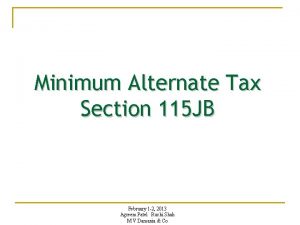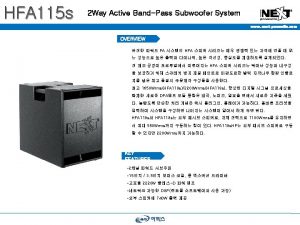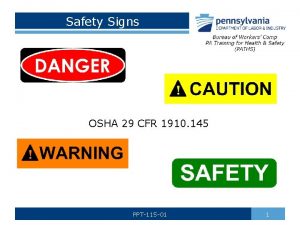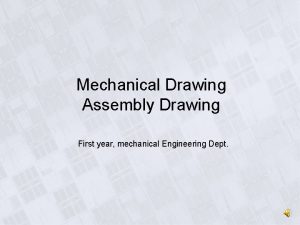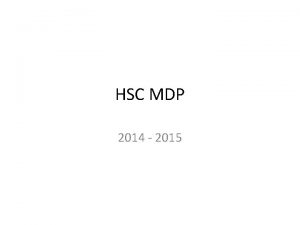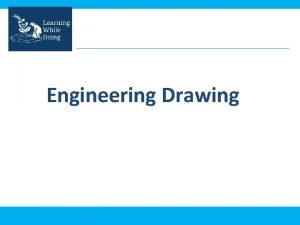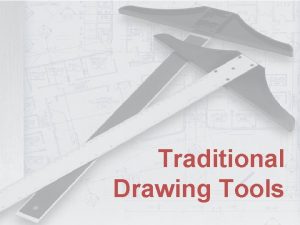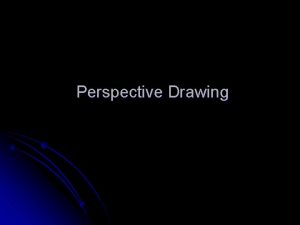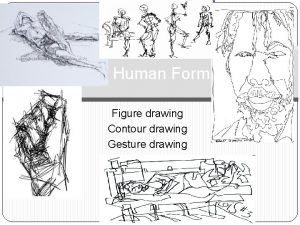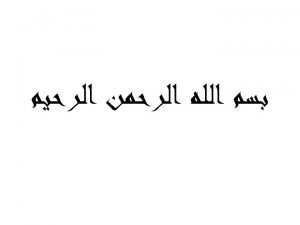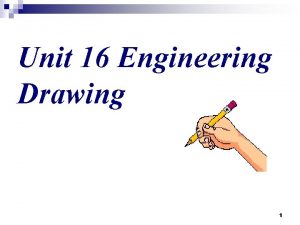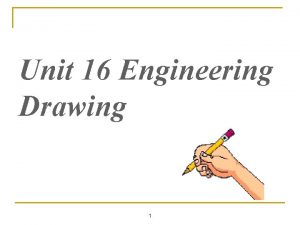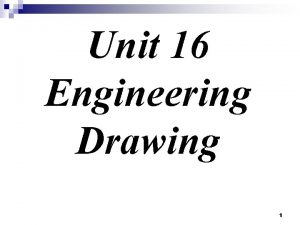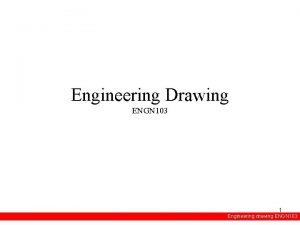Mechanical Drawing MDP 115 First Year Mechanical Engineering




































- Slides: 36

Mechanical Drawing (MDP 115) First. Year, Mechanical Engineering Dept. , Faculty of Engineering, Fayoum University Dr. Ahmed Salah Abou Taleb

FITS and TOLERANCES 2

Fits 3

Fits Between Mating Parts 4

ILLUSTRATION OF DEFINITIONS 5

Fits Between Mating Parts Fit: degree of tightness between two parts. Fit types: – Clearance Fit – tolerance of mating parts always leaves a space – Interference Fit – tolerance of mating parts always results in interference – Transition Fit – sometimes interferes, sometimes clears 6

Clearance Fit The mating parts have such upper and lower limits that a clearance always results when the mating parts are assembled. 7

Clearance Fit (e. g. : H 7/f 6) 8

Clearance Fit (pl. H 7/f 6) 9

Clearance Fit (pl. H 7/f 6) 10

Interference Fit The mating parts have such limits that the lowest shaft diameter is larger than the largest hole diameter. . 11

Interference Fit (e. g. H 7/p 6) 12

Interference Fit (e. g. H 7/p 6) 13

Interference Fit (e. g. H 7/p 6) 14

Transition Fit Either a clearance or an interference may result depending on the exact value of the dimensions of the machined shaft and hole within the specified tolerance zones. 15

Transition Fit (e. g. : H 7/j 6) 16

Transition Fit (e. g. : H 7/j 6) 17

Transition Fit (e. g. : H 7/j 6) 18

Transition Fit (e. g. : H 7/j 6) 19

Together (Letter & Grade) on both mating components decide quality of fit Representation of Fit 0. 021 INTERFERENCE FIT 0. 022 0. 013 Φ 30. 035 Φ 30. 022 Φ 30. 021 Φ 30. 000 H 7 : Tol Grade 7 mean 21μ variation (H means upper deviation zero) p 6 : Tol Grade 6 means 13μ variation 20 (p means upper deviation is 22 μ)

21

Φ 30 G 7 r 6 Φ 30 F 8 r 6 Φ 30 H 8 e 6 Φ 30 H 7 s 6 Estimate kind of fit 22

FITS APPLICATIONS 23

24

Basic Systems for Fit Specification In order to standardize dimensioning of fits, two basic systems are used: 1) Basic Hole System: Minimum hole diameter is taken as the basis. Lower deviation for the hole is equal to zero. Dmax is prescribed according to the specified tolerance. 2) Basic Shaft System: Maximum shaft diameter is taken as the basis. Upper deviation for the Shaft is equal to zero. dmin is prescribed according to the specified tolerance. 25

Basic Hole System • Toleranced dimensions are commonly determined using the basic hole system in which the minimum hole size is taken as the basic size. 26

Fits in Basic Hole System 27

Basic Shaft System • In this system, the maximum shaft is taken as the basic size and is used only in specific circumstances. 28

Fits in Basic Shaft System 29

Indicating Tolerances 30

Two ways of indicating tolerances on technical drawings Limits of a dimension or the tolerance values are specified directly with the dimension. Questions ? 31

Indicating tolerances The dimension is given by: • a shape symbol, • nominal size, • a letter indicating the position of the tolerance zone in relation to zero line, • a number indicating the width of the tolerance zone. (quality of production? ) 32

Specifying Fits in Technical Drawings 33

DIMENSIONING OF TOLERANCES -RULES • The upper deviation should be written above the lower deviation value irrespective of whether it is a shaft or a hole. • Both deviations are expressed to the same number of decimal places, except in the cases where the deviation in one direction is nil. 34

Example For a nominal diameter of 25 mm and for a fit specification of H 7/j 5 determine the following: • Type of the tolerancing system • Tolerance on the hole • Tolerance on the shaft • Upper and lower limits of the hole (Dmax, Dmin) • Upper and lower limits of the shaft (dmax, dmin) • Type of the fit 35

Key a) H 7/j 5 Basic Hole System b) D = 25 mm, from the given table: + - nominal size H 7 j 5 c) 36
 Mdp drawing
Mdp drawing Mdp drawing
Mdp drawing Mdp drawing
Mdp drawing Engineering drawing scale name
Engineering drawing scale name Alborz geramifard
Alborz geramifard Wharton risk center
Wharton risk center Mdp
Mdp Mdp and mrp examples
Mdp and mrp examples Mdp example
Mdp example Mdp
Mdp Mdp example
Mdp example Software mdp 2017
Software mdp 2017 Mdp
Mdp Mdp roadmap
Mdp roadmap Mdp example
Mdp example Mdp
Mdp Mdp
Mdp Mdp
Mdp Mdp fabrication
Mdp fabrication How are angles of 30° and 60° sketched?
How are angles of 30° and 60° sketched? Leavers poem year 6
Leavers poem year 6 What is 115 rounded to the nearest hundred
What is 115 rounded to the nearest hundred Psalm 115 esv
Psalm 115 esv Hkr 118 uitm
Hkr 118 uitm Ieee 115
Ieee 115 Next hfa 115
Next hfa 115 Interior point geometry
Interior point geometry Ensayo narrativo
Ensayo narrativo Csc 115
Csc 115 Psalm 24 gnt
Psalm 24 gnt Crónica de d joão i resumo capítulo 115
Crónica de d joão i resumo capítulo 115 649 hangi yüzlüğe yuvarlanır
649 hangi yüzlüğe yuvarlanır Sec 115 jb
Sec 115 jb Next hfa 115
Next hfa 115 Fas 130
Fas 130 Edthp 115
Edthp 115 Sign with white background with a green panel
Sign with white background with a green panel
